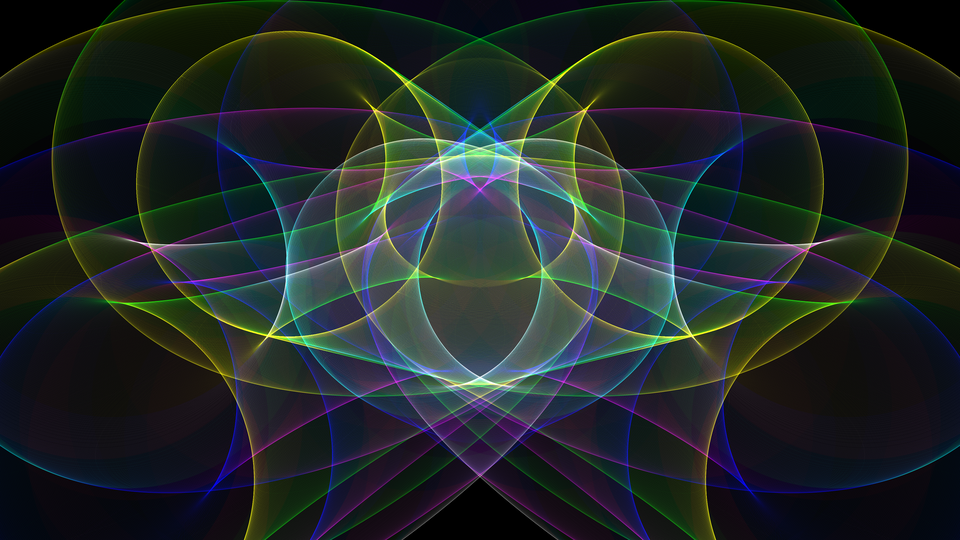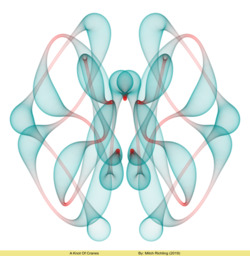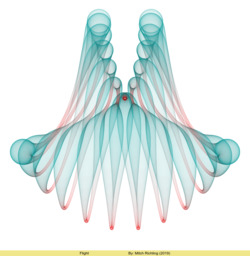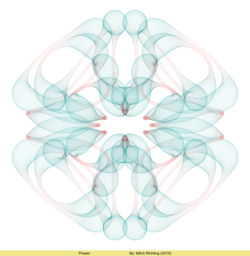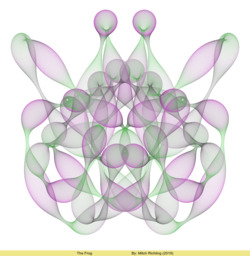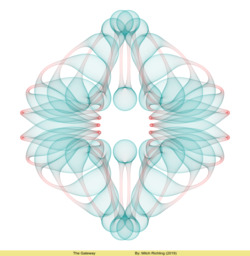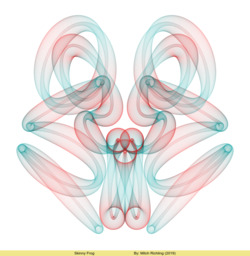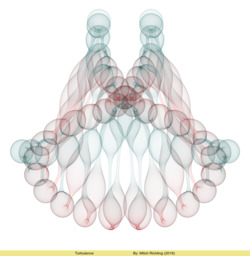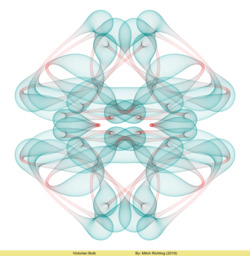Mitch Richling: Circle Art Part 1
| Author: | Mitch Richling |
| Updated: | 2022-06-23 |
Table of Contents
1. Circle Art
The images here were inspired by a Scientific American blog post. The idea is is to draw a collection of circles that form an artful shape. Circles have a center and radius, so all we must do is figure out where to put the centers and how big to make the circles. The centers are placed along a parametric curve showing some symmetry in the plane. As for the size of the circles, any nicely periodic function with the same period as the overall parametric curve will do. Doing something similar with color adds to the final image. I know. This all sounds a bit vague, and the best way to make it concrete is to look at some code.
For this "Part 1" I have used a vector graphics approach with SVG, and LISP as the programming language. The code is one of the example programs that I ship with my LISP Mathematical Library (MJRCALC). Because we are using a pretty sophisticated rendering model with SVG, it's the same one use by Postscript & PDF, we can can produce some pretty organic images using only a 10K to 40K images.
2. Gallery
3. Another Approach
The techniques used for the images above work well with the SVG imaging model; however, they start to breakdown when the number of circles grows very large. In Part 2, I use a direct raster rendering approach capable of handling an enormous number of circles. So check out! Here is an example image:
